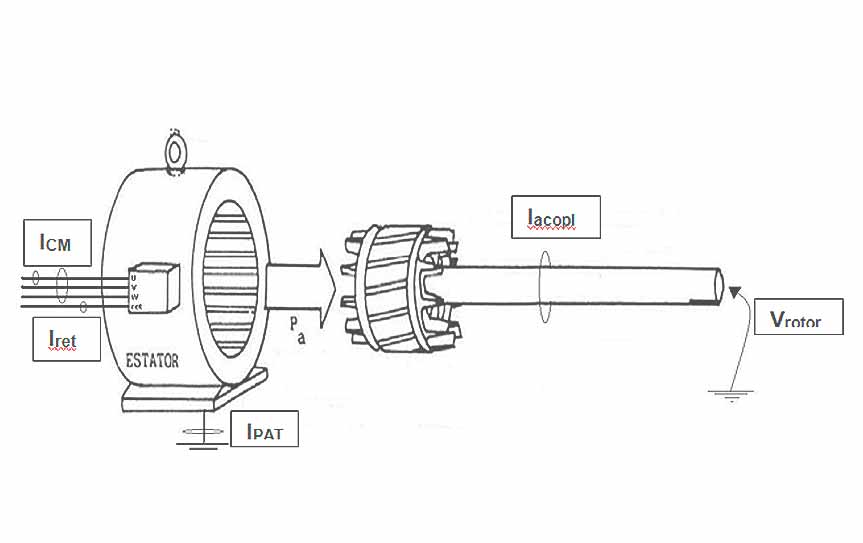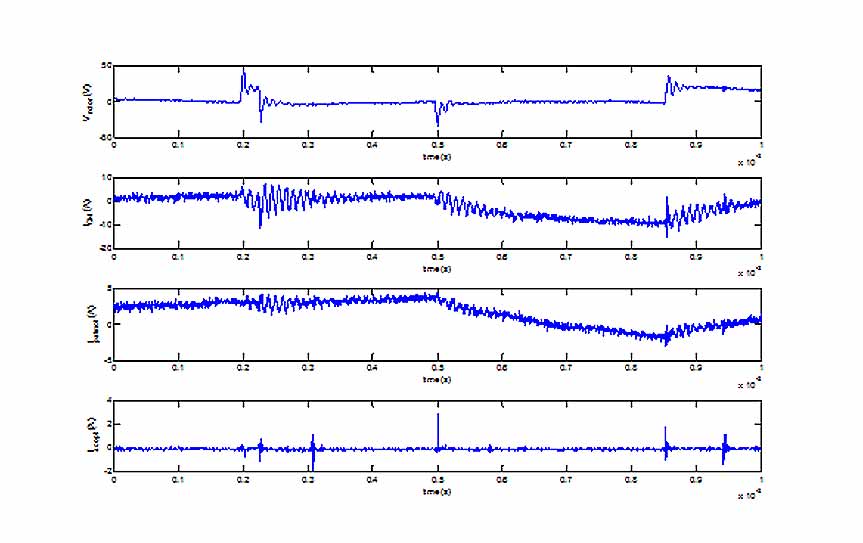Parasite currents on bearings
Problem
The use of power inverters in rail traction applications can generate non-zero rotor-to-ground voltages in asynchronous traction motors. Depending on the application and earthing configuration of the traction circuit, these voltages may generate an excessive current flow through different earthing paths, including in some cases the motor bearings. An early motor bearing failure was detected in the present case and parasitic currents were believed to be the cause of the problem.
Aim
To determine the root cause of the motor bearing failures. To that end, parasitic currents in the traction circuit together with the induced rotor-to-ground discharges need to be evaluated.


Instrumentation/ measurement
• Voltage measurements between rotor and ground connection in the traction motor.
• Parasitic currents in different current flow paths within the traction common-mode circuit (common-mode currents, ground currents, return and 4th cable currents).
• Parasitic currents in different current flow paths within the traction common-mode circuit (common-mode currents, ground currents, return and 4th cable currents).
Results
A current discharge through the bearing was detected by means of the rotor-to-ground voltage measurement. This discharge was also confirmed through the various parasitic current measurements. These discharges were regard as the primary cause of bearing failure.
Actions
Modifying the earthing configuration of the traction chain may reduce common-mode current discharges.



